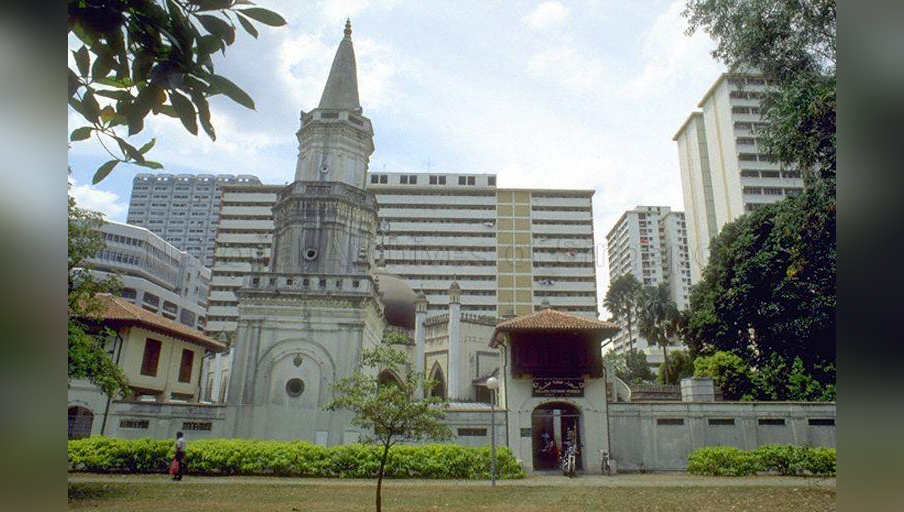The Hajjah Fatimah Mosque was built more than 170 years ago, between 1845 and 1846, and still stands today as Singapore's very own "leaning tower", thanks to its four-storey minaret that tilts at an angle of six degrees.
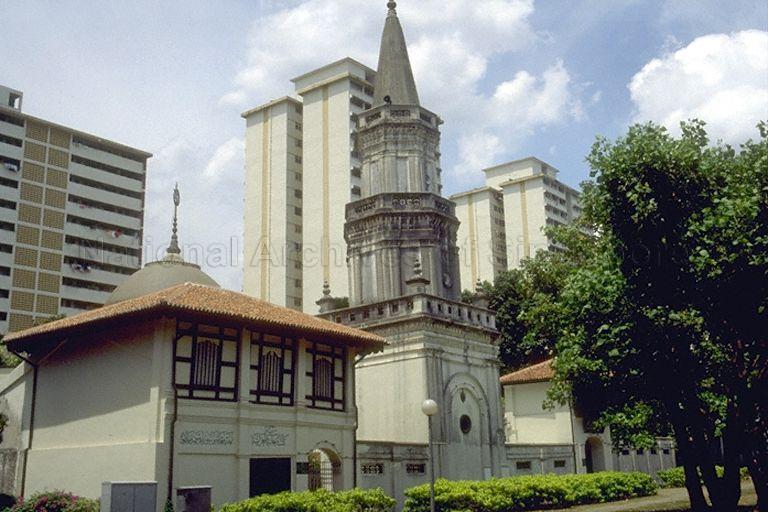 Hajjah Fatimah Mosque in 1990. Via National Archives.
Hajjah Fatimah Mosque in 1990. Via National Archives.
Hajjah Fatimah
Hajjah Fatimah was a Malaccan woman who married into the family of a Bugis prince from Celebes (present day Sulawesi). She was an astute businesswoman who continued to grow her husband's business after his death.
In the late 1830s, Hajjah Fatimah's house was ransacked twice and burnt. Luckily, she managed to escape unscathed. To express her gratitude, Hajjah Fatimah donated the land and money to build a mosque on the spot where her house stood.
Upon completion, the mosque was named after her.
Mosque's special features
The mosque complex contains a minaret tower, a prayer hall, an area for ceremonial washing, the imam's residence, a mausoleum (housing the bodies of Hajjah Fatimah, her daughter, and her son-in-law), a cemetery, and gardens.
Designed by an unknown European architect, the European influence is most easily spotted in the minaret, which resembles the steeple of a church.
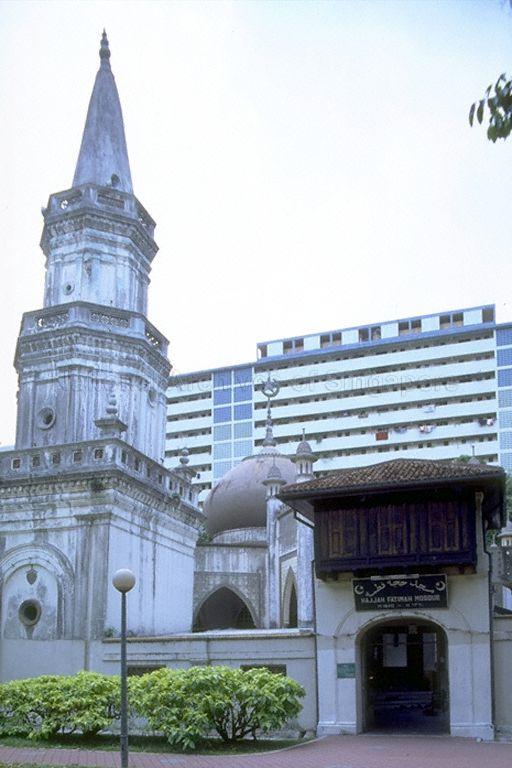 1997 photograph of the Hajjah Fatimah Mosque. Via National Archives.
1997 photograph of the Hajjah Fatimah Mosque. Via National Archives.
Speaking of the minaret, its slight tilt is caused by moisture seepage.
The handmade bricks used in the tower's construction have also shifted over time. When the mosque was gazetted as a National Monument in 1973, restoration works were done to waterproof the dome and minaret to prevent it from tilting any further.
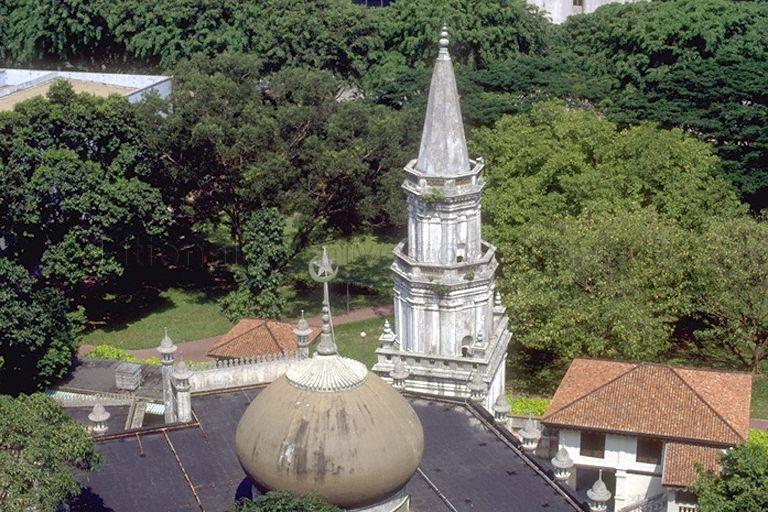 1997 photograph of the Hajjah Fatimah Mosque dome and minaret. Via National Archives.
1997 photograph of the Hajjah Fatimah Mosque dome and minaret. Via National Archives.
The mosque is also a mash-up of various cultural influences. During the 1930s, restoration works were done by French contractors and Malay artisans based on designs by Chinese architects.
[related_story]
The mosque's onion-shaped dome is indicative of the Indo-Saracenic style favoured by British architects in the 19th century.
The base of the dome has 12 lancet windows outfitted with stained glass.
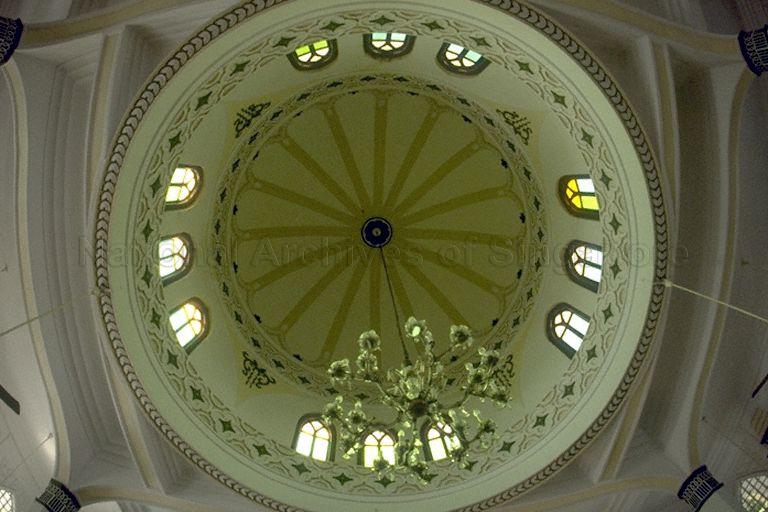 Source: NAS
Source: NAS
The minaret is decorated with European pilasters with Doric capitals, while the parapets of the mosque are also decorated with Chinese glazed green tiles.
After Hajjah Fatimah passed away, the mosque was passed over to the Alsagoff family, and later, the Majlis Ugama Islam Singapura (MUIS), which manages it to this day.
Here are some equally interesting but totally unrelated stories:
5 so-called crazy things people could do if they were given $100,000 to save the environment
Ways to make the government listen to you
How to not ruin your holiday when signing up for tour packages
Who looks after our ailing seniors outside of general hospitals?
Top image via National Archives.
If you like what you read, follow us on Facebook, Instagram, Twitter and Telegram to get the latest updates.
